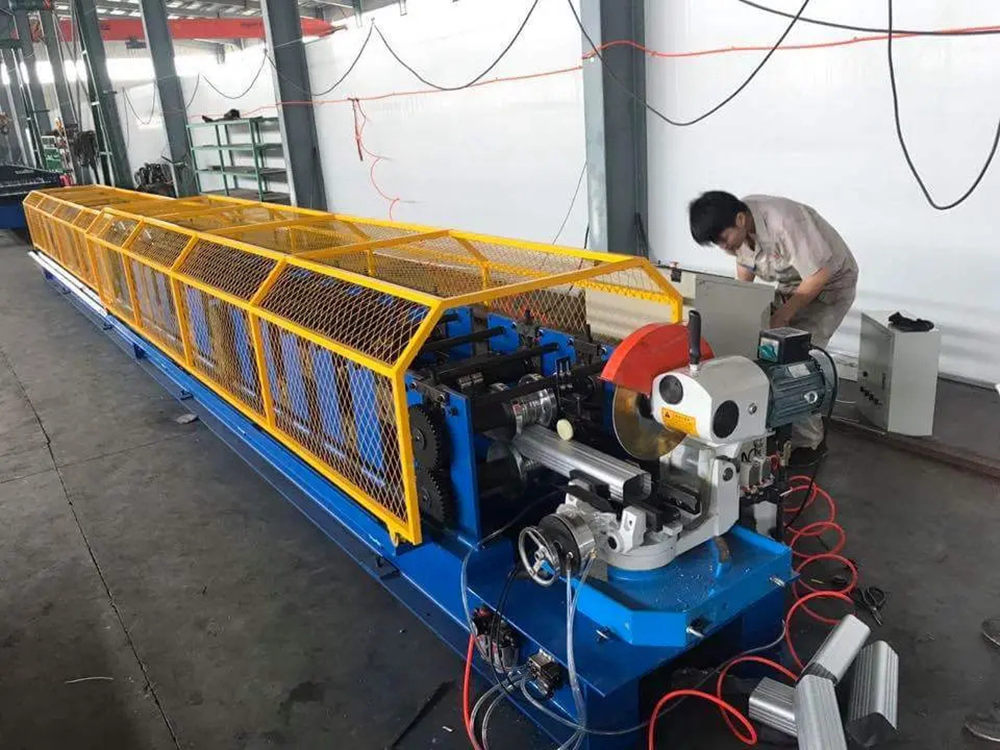
Understanding Gutter Downpipe Roll Forming Machines An In-Depth Look
In the realm of construction and architectural design, the importance of effective water drainage cannot be overstated. Among the essential components for managing rainwater are gutters and downpipes. To meet the increasing demand for these fixtures, manufacturers have turned to advanced technology, particularly the gutter downpipe roll forming machine. This article delves into what these machines are, how they operate, and their significance in modern manufacturing.
What is a Gutter Downpipe Roll Forming Machine?
A gutter downpipe roll forming machine is a specialized piece of equipment used in the production of metal gutters and downpipes. These machines are engineered to convert flat metal sheets into specific shapes, which are then used for water management in residential and commercial buildings. Most commonly, these machines work with materials such as steel, aluminum, or galvanized iron, providing the necessary durability and corrosion resistance for long-term performance.
The Roll Forming Process
The roll forming process involves feeding a flat metal sheet into a series of rollers. Each roller gradually bends and shapes the metal into the desired profile. The process is continuous, which means that as long as there is raw material available, the machine can produce an unbroken length of the gutter or downpipe. Here’s a step-by-step breakdown of the process
1. Preparation The flat metal sheets are cleaned and cut to the appropriate size before being loaded into the machine. 2. Feeding The prepared sheets are fed into the roll forming machine, where a series of rollers progressively shape the metal.
3. Profiling As the sheets pass through the rollers, they are shaped into the specific contours of the gutter or downpipe. This includes bending, curving, and flanging.
4. Cutting and Finishing Once the desired length is achieved, the machine cuts the formed gutter sections. Optional features such as punching holes for downpipe fittings can also be integrated into the production process.
Advantages of Using Roll Forming Machines

1. Efficiency Roll forming machines can produce long lengths of gutters and downpipes at a rapid pace, substantially increasing productivity compared to manual methods.
2. Precision The automated nature of roll forming machines ensures consistent product quality. Each piece is manufactured to precise specifications, minimizing waste.
3. Versatility These machines can be designed to produce a variety of profiles, accommodating different architectural styles and customer preferences.
4. Cost-Effective Although the initial investment in a roll forming machine can be significant, the long-term savings on labor and material waste make it a cost-effective solution for manufacturers.
5. Durability Roll forming produces strong, uniformly shaped products, lending themselves well to the demands of outdoor exposure and harsh weather conditions.
Applications in Construction
Gutter downpipe roll forming machines play a vital role in the construction industry. They supply essential components for new buildings, renovations, and repairs. Features such as seamless designs help prevent leaks and enhance the aesthetics of structures, while various finishes can be applied for additional protection against corrosion.
The resulting gutters and downpipes are not only functional but can also be designed to complement the architectural style of various buildings. Whether it is a residential home or a large commercial facility, having the right drainage system is critical to longevity and maintenance.
Conclusion
In summary, the gutter downpipe roll forming machine is an indispensable tool in today's manufacturing landscape. With its ability to produce high-quality, cost-effective water drainage solutions, it supports both the aesthetics and durability of modern architecture. As the industry continues to evolve, these machines will undoubtedly play an increasingly crucial role in meeting the demands for practical and efficient construction solutions.